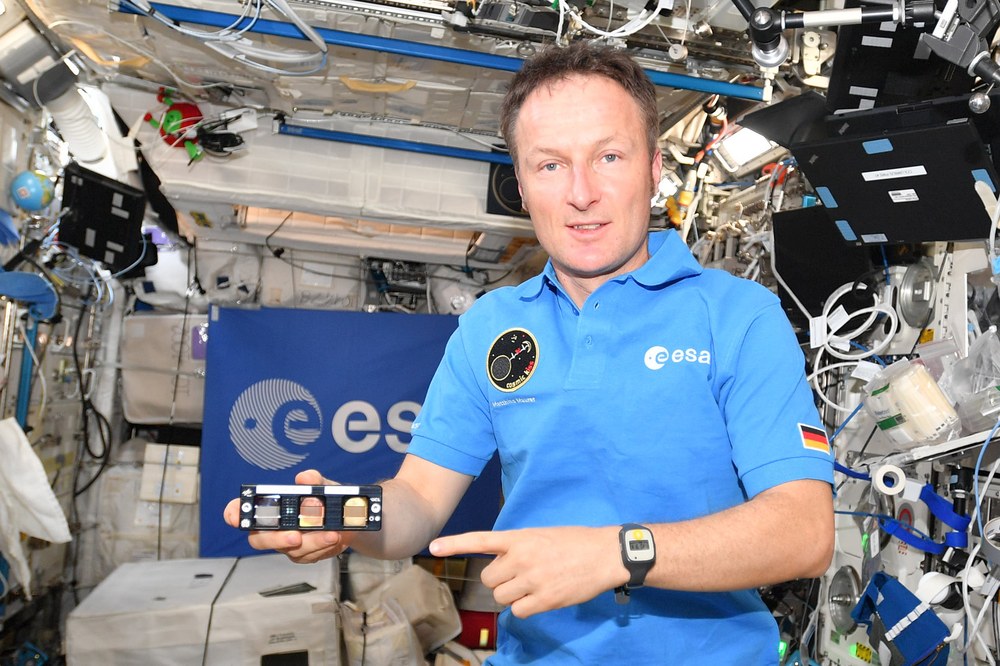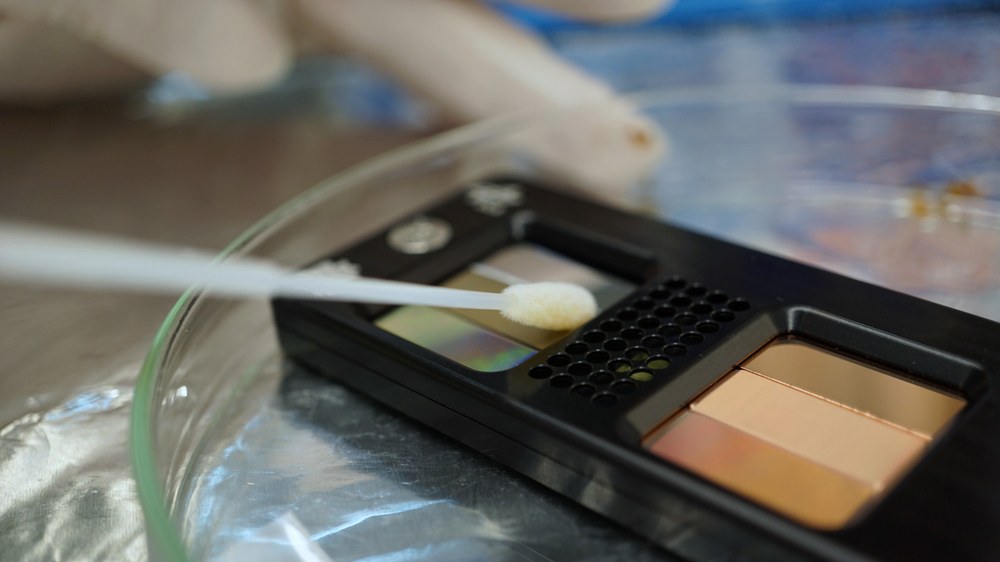Fingerprint research to combat harmful bacteria


- New types of antimicrobial surfaces are being tested in schools, hospitals and on the International Space Station (ISS).
- In a new experiment conducted by schoolchildren, young researchers will touch different materials and textures at regular intervals for 15 weeks.
- This cross-disciplinary project is aimed at curbing the spread of microorganisms.
- Focus: Space, medicine, materials research, Cosmic Kiss
Microorganisms exist everywhere where humans are found. And humans are everywhere – not just on Earth, but on the International Space Station (ISS), as well. Some of these microscopic creatures are perfectly harmless, but others can cause serious diseases or even inflict material damage on the ISS. The German Aerospace Center (Deutsches Zentrum für Luft- und Raumfahrt; DLR) is investigating ways of preventing this in its 'Touching Surfaces' experiment, which is being carried out on board the ISS, at Cologne University Hospital and now also by schoolchildren.
The 10 chosen schools have received special sample holders – 'touch arrays' – for the experiment. These hold copper, brass and steel surfaces fixed into an aluminium frame, each with three different surface textures. Over the course of 15 weeks, the 10- to 16-year-old pupils that make up the project teams will touch all of the metal surfaces in the touch arrays once per week. In doing so, they will leave behind their fingerprints and the microorganisms that adhere to them every day when they grasp door handles or press light switches, for instance. "After our young researchers have touched the touch arrays, they will wash and disinfect their hands," says Ralf Möller of the DLR Institute of Aerospace Medicine in Cologne. "The process has been precisely defined and the results are scientifically comparable with one another, just like the experiment that is taking place in parallel on board the ISS.'
In addition to the touch arrays, the test package for each school contains sticks for swabs, petri dishes and sampling vessels for DNA testing on microbial contamination. The samples will be evaluated in conjunction with the DLR_School_Labs. "The experiment provides the participants with insights into interdisciplinary research, as Touching Surfaces brings together biology, medicine, physics, chemistry and materials sciences," says Möller.

Touching Surfaces on the ISS – testing innovative new antimicrobial surfaces
Your consent to the storage of data ('cookies') is required for the playback of this video on Youtube.com. You can view and change your current data storage settings at any time under privacy.
Copper, brass and steel have different effects on microorganisms
The metals of the touch arrays and their various surface textures have different effects on bacteria. For each metal, one of the surfaces is polished to a smooth finish, while the other two have fine patterns created using a laser. "The textured surfaces improve the effectiveness in terms of microbial inactivation, particularly in the case of copper," says Möller. Generally speaking, copper has antimicrobial properties and can render bacteria harmless. Brass is a mixture of copper and zinc, while steel serves as the reference metal.
Which bacteria adhere to which surfaces?
In the Touching Surfaces project, DLR has teamed up with institutions including Saarland University to study which microorganisms adhere to which surfaces. The researchers are also keen to determine whether there are any differences between the samples from the schools, the university hospital and the ISS, and what conclusions can be drawn from the findings.
Touching Surfaces is intended to increase the efficacy of antimicrobial surfaces designed for use in space and on Earth. Such surfaces are also important in combating infectious diseases; they can help kill antibiotic-resistant bacteria such as Methicillin-Resistant Staphylococcus Aureus (MRSA) or Vancomycin-Resistant Enterococci (VRE) in hospitals and ensure that pathogens cannot continue to spread via contact surfaces.
The project is part of the Cosmic Kiss mission of ESA astronaut Matthias Maurer, which launched to the ISS in early November 2021. Maurer and the other astronauts on board will also touch the touch arrays once per week, transferring the microorganisms from their hands to the surfaces in the process. The five touch arrays from the ISS will later be sent back to Earth for analysis at DLR.
